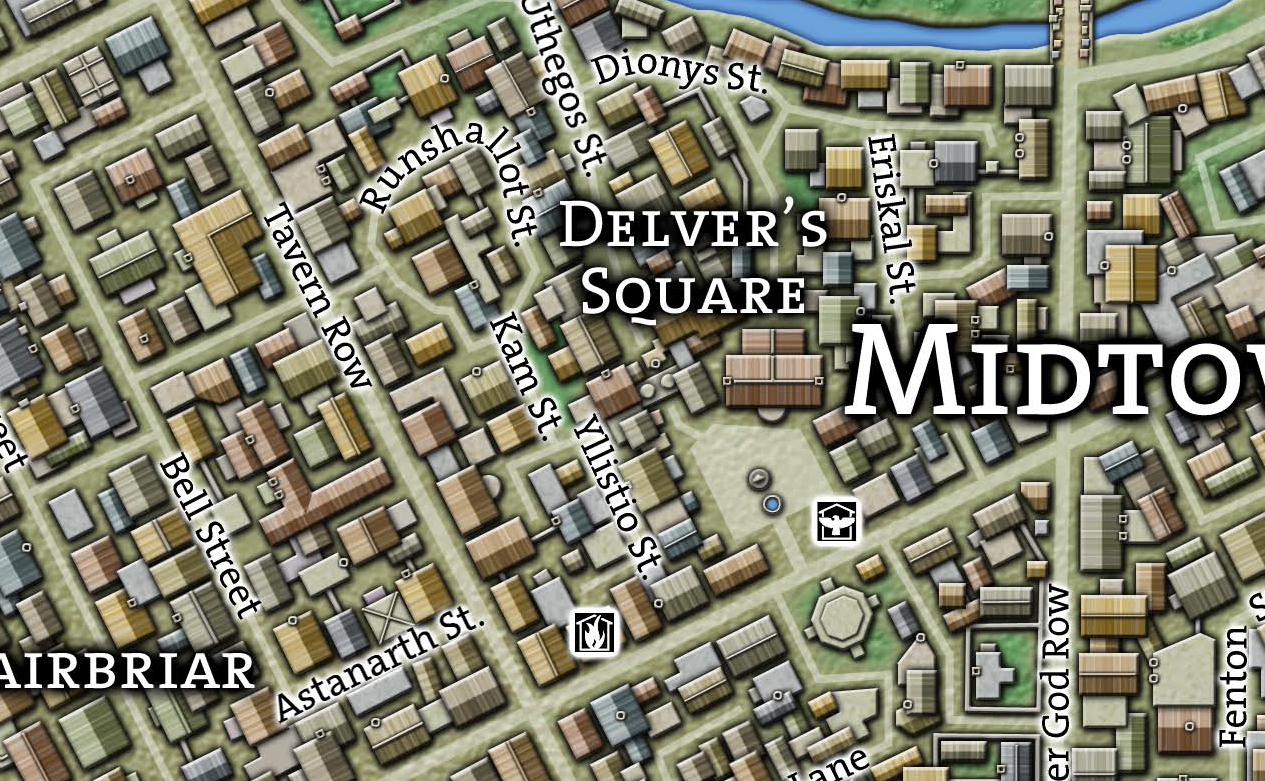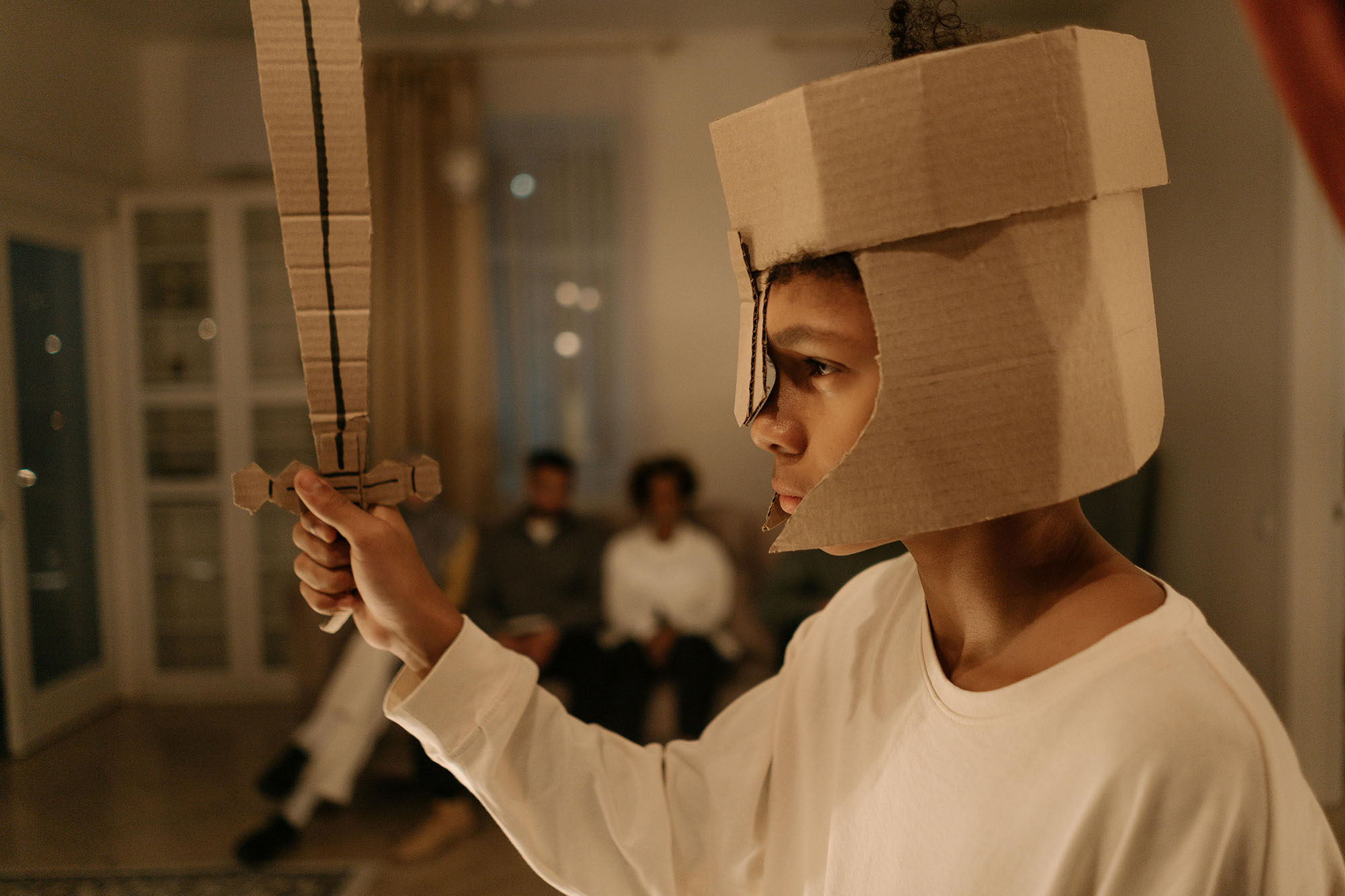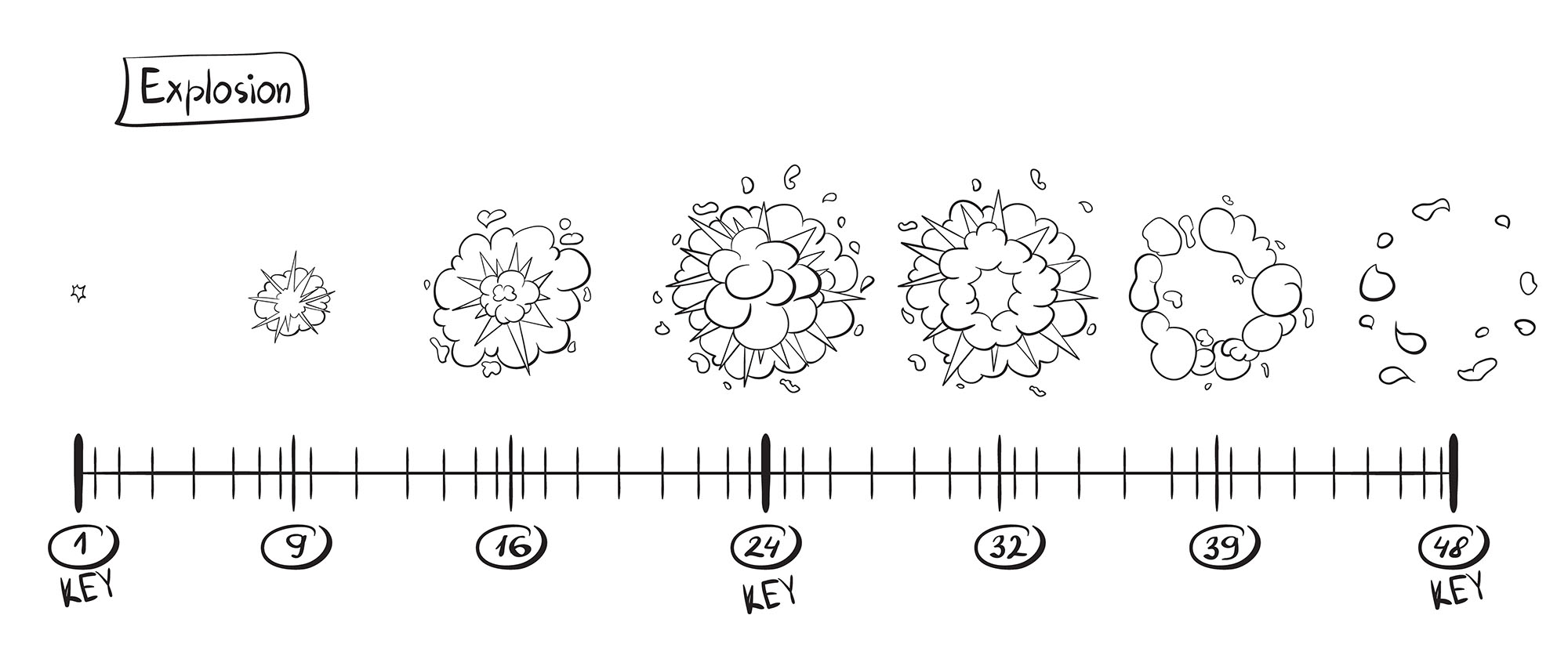
DISCUSSING
In the Shadow of the Spire – Session 35B: Letters of Mysterious Motive
Tor was deeply concerned by the missive from the Order of the Dawn.
“Could he suspect? But if he was going to kill me, why would he send me a note?” Tor shrugged. “Of course, the last time I tried to think my way through this sort of thing, I ended up over-thinking it.”
I use a campaign status document to keep track of the loose threads, NPC actions, faction agendas, backdrop events, and everything else that goes into bringing a reactive and dynamic campaign to life.
This session is a great example of how you can take material from your campaign status document and weave it together into a complex and compelling session for your players. To follow along, though, you’ll first need to understand the various materials I’ve prepped for the In the Shadow of the Spire campaign:
- Campaign Status Document, the details of which we’ll be diving into shortly.
- Scenarios, which are probably largely self-explanatory. The overall campaign structure is node-based (with a subset of megadungeon-structured scenarios), so I also have a Campaign Revelation List which shows how all of the scenarios are connected to each other via clues. (This campaign is old enough that this document is still referred to as the “Adventure Track.”) The scenario notes themselves are divided into the separate acts of the campaign, and Act II into three subsections: Banewarrens scenarios, Night of Dissolution scenarios, and Chaos Cult (I use this division when organizing scenario files on my hard drive. I also have separate three-ring binders for each scenario type — so I have a Banewarrens binder, a Chaos Cult binder, and a Night of Dissolution binder at the table, although I believe at this point in the campaign, the CC and NOD scenarios were still in the same binder.) These scenarios are further indicated by an alphanumeric code, so NOD3 is the Surgeon in the Shadows, for example, while BW05 is the Outer Vaults of the Banewarrens.
- Backdrop Files, which I discuss in the Smart Prep Each backdrop file provides a focused breakdown of ongoing background events that are related to each other. I maintain a number of these for the In the Shadow of the Spire campaign, but the two relevant for the current session are Backdrop 1: Balacazar vs. Killraven and Backdrop 2: Novarch in Exile. (At this point, the latter of these has begun transitioning out of being purely background material because the PCs keep getting involved with church politics.)
- Interludes, which are scenarios unconnected to the primary campaign structures. This is a mix of one-off events, scenarios created by the players pursuing agendas of their own creation, and other miscellanea.
- Subplots, which are long-running series of events which the PCs are interacting with (or expecting to interact with). A lot of these seem to end up being factions. (The distinction from Backdrops is that, due to their interactivity, the Subplots have either mini-scenarios or full scenarios. The distinction from Interludes is that Subplots aren’t one-shot adventures; they’re long-running sequences. Although, again, these distinctions get blurred in practice as PCs ignore subplots, get involved with events I thought were backdrops, or have long-term events spin off from an Interlude.)
It might be worth noting that I’m not super-invested in the Backdrop/Interludes/Subplots division; it’s just what I’ve found useful for organizing my notes for this specific campaign.
Okay, with this groundwork laid, let’s dig into Session 35.
IN THE CAMPAIGN STATUS DOCUMENT
The campaign date is 09/18/790 — the 18th day of Kadal in the 790th Year of the Seyrunian Dynasty. The PCs have spent most of the day — in sessions 32 thru 34 — engaged with the chaos cultists at, first, the apartment building where they’re conducting their venom-shaped thrall experiments and, later, in the ruins of the Old City below the apartment building.
The result is that a bunch of events scheduled for the 18th have stacked up, particularly because the PCs spent most of the 17th throwing a huge spanner into the schisming of the Imperial Church and getting themselves thoroughly tangled up in a city-wide political crisis.
The two most relevant sections of my campaign status document here are the Newssheets (summarizing backdrop events in the city) and Events (which are things more or less “aimed” at the PCs). These are the relevant entries from each section for the 18th:
NEWSSHEETS
- 09/18/790: Blood in the Bathhouse. A flock of ravens bursts the doors on the Row Bathhouse and drives out the customers. When the ravens fly out again, the baths have been polluted with Blood. (Tavern Row War)
- 09/18/790: Vile Rites Performed in Oldtown! Report on what the City Watch discovered in the Oldtown apartment complex.
EVENTS
- 09/18/790: Ranthir receives a letter from Mahdoth’s. (BW03A)
- 09/18/790: Jevicca uses a sending to contact them. (Jevicca’s Sending)
- 09/18/790: Gemmell sends Tor a letter. (The orc prisoner has escaped with inside help; Sir Kabel was warned. Gemmell is worried that there are traitors in the ranks. But he trusts Tor because he gave him Kabel’s letter.)
- 09/18/790 (8 PM): Meeting with Sir Kabel at Pythoness House. (Meeting with Kabel)
- 09/18/790 (11 PM): GQT2 comes to Nibeck Street mansion. (BW Status)
The text in parentheses at the end of some of these entries indicate that they are pointers, either to a separate document (e.g, Tavern Row War refers to a section of Backdrop 1: Balacazar vs. Killraven) or to a later section of the campaign status document (e.g, BW Status and Jevicca’s Sending are both sections which appear later). This way, these sections of the campaign status document don’t become overwhelmed with so much information that they can no longer serve their essential function.
You can see in the case of “Gemmell sends Tor a letter,” however, that the supplementary info was short enough that I could just leave it in situ. Similarly, the specific details of “Vile Rites Performed in Oldtown!” are something I’m prepared to just improvise as necessary.
In addition to these regular sections of the campaign status document, I’ve also added a special section entitled Tavern Row Events. These are “random” encounters that I prepped several weeks before this session as part of Backdrop 1: Balacazar vs. Killraven. Since the PCs are boarding just around the corner from Tavern Row — and regularly walk up and down the street — I wanted them to experience some of the peripheral shrapnel of this gang war themselves. I’ve transferred the events from the Backdrop File to the campaign status document so that they’ll be right in my face when I’m running the session. (That way I won’t forget about them.)
Usually I would integrate events like this into the regular sections of the campaign status document, but in this case I decided it would be more useful to keep them grouped together. (Particularly because they weren’t keyed to specific dates or times.)
TAVERN ROW EVENTS
Raven Spies: While passing down Tavern Row, the PCs notice an unusual number of ravens roosting along the rooftops — peering eerily down into the streets below. Passersby keep glancing up nervously at them.
- These are Killraven spies.
- Just before the Showdown at the Onyx Spider, the number of ravens will multiply, roosting on seemingly every rooftop.
The Stink Man: The PCs are in position to spot Durant and a couple of Killraven thugs heading into the Old Goose tavern. They’re either there to intimidate Unos (before the 15th), kill Unos (on the evening of the 15th), or to threaten Unos’ heir Talia.
Tellith’s Problems: Tellith is harassed by Killraven enforcers: An ogre sorcerer named Fatok and three thugs. They’re demanding a monthly protection payment of 100 gp.
- “Don’t think your delver friends will help you.”
We can now see all the pieces that have been laid in place. These events have built up over time — either from long-term backdrop prep; time events; or consequences spinning off like free radicals from the actions of the over the last dozen sessions. All of these separate vectors have converged to seed the campaign status document with these specific mix of events for the 18th, and then the PCs actions on the 18th itself have further shaped how they’ll play out at the table.
RUNNING SESSION 35
You may want to pop open Session 35 in a separate browser tab so that you can follow along as we walk through the events that played out.
Having left the chaos temple in the Old City at the end of Session 34, the PCs kicked things off with some logistical play: Inventorying their loot, identifying magic items, etc. Standard stuff.
They had completed these chores as a matter of urgency and necessity, but now that the dinner hour was approaching, they realized they were still variously caked with sewer sludge, crusted blood, and other various foulnesses. And sothey headed toward the bathhouse on Tavern Row.
One of the reasons for keeping a campaign status document is that it can sit on the table right next to you during the whole session. Throughout the session, therefore, I’m consistently checking the campaign status document; sort of “touching base” to make sure I’m not forgetting anything and/or looking for stuff that I can opportunistically inject into the ongoing events.
Here my players are announcing their intention to visit a bathhouse on Tavern Row, and right at the top of my campaign status document I’m looking at the “Blood in the Bathhouse” event.
So this is pretty straightforward, right? It’s a no-brainer to have them arrive in the immediate aftermath of that event.
I then cross out this event, which obviously helps me keep track of what has and hasn’t happened. In addition, it also makes it easy for me to update my campaign status document between sessions by simply looking for and removing entries that have been crossed out.
With a shrug, Tor and Tee headed into the bathhouse. They found Derra, the proprietress of the bathhouse, being questioned by a watchman. Tee took the opportunity to sneak through the far door and into the baths themselves.
One consequence of having the PCs arrive in the immediate aftermath of the event — rather than hearing about it later through the rumor mill or by reading about it in a newssheet — is that they can choose to interact with it. “Derra” is just an improvised name, but I make a point of writing it down in my notes.
As they emerged from the door, they spotted a raven watching them from the roof on the opposite side of the Row. Seeing that it had been noticed, the raven took off and began to fly away to the south.
Since the PCs are on Tavern Row, it’s also time to trigger one of the Tavern Row Encounters. Here I’ve grabbed the “Raven Spies” encounters. It plays out a little differently than written because of the present circumstances. This is just fine, of course. But I also make the decision to NOT cross out the encounter. This is an encounter that could be easily repeated in any case.
Elestra flew in through the window of her room. The others followed on foot.
But when they opened the front door of the Ghostly Minstrel, they found Tellith being confronted by a large ogre and three thugs.
“—and don’t think your delver friends will help you,” the ogre growled.
“Delver friends like us?” Tee stabbed him in the back.
Elestra choosing to fly the Killraven spy straight back to their rooms (oh no!) has complicated this sequence of events more than I’d anticipated. (My thought behind the encounter was more along of the lines “look at those creepy ravens; they’re very creep.”)
Your thought might be to simplify it back down. Mine, on the other hand, is to seize the opportunity to add even more complexity to it. And since everyone is rushing back to the Ghostly Minstrel, I have an easy tool to do it: The “Tellith’s Troubles” encounter is not only apropos, but will also complicate the group’s desire to reach their rooms and join Elestra.
Tellith thanked them again for their help. While she was expressing her gratitude, she remembered that letters had come for “Master Ranthir and Master Tor, now where did they go? Ah! Here they are!”
Checking in with my campaign status document again, I can see that several letters were supposed to arrive for the PCs throughout the 18th. Since they’ve been out all day, these have all stacked up.
And this, of course, is a perfect time for Tellith to deliver them.
You can begin to see how all of these separate elements, independently added to my campaign status document (often just one at a time!), begin weaving together during actual play into complex, multilayered scenes and sequences.
THE WEAVING OF TOR
“Nor is that the only treason in our midst. The orc woman you captured in the Banewarrens has escaped.”
“Escaped?” This time Tor was truly surprised. “How is that possible?”
“There must be a traitor within the Order,” Gemmell said. “The truth is that you’re the only one I can trust. You not only gave me Sir Kabel’s location, but you were also responsible for capturing the escaped prisoner.”
Tor valiantly stopped himself from gaping. “I’m honored that you would place your faith in me.”
This is one of my favorite moments in the entire campaign.
It started back in Session 31, when I set up a crucible choice for Sir Tor by having Sir Gemmell and Sir Kabel both send him a letter at the same time: Which letter would be he respond to? Which side would he choose in the schisming of the Church and the Order of the Dawn?
And then Tor blew my mind.
Believing that the arrival of both letters nearly simultaneously was too strange to be a coincidence, Tor concluded that Sir Kabel’s letter was a fake, sent by Sir Gemmell to test his loyalty. So he responded by showing Sir Gemmell the letter, unwittingly betraying Sir Kabel.
That alone was the stuff great game sessions are made of: Tor was going to be completely devastated when he realized what he’d done!
… except the player mulled it over, and realized that she may have made a mistake. So Tor took emergency action and managed to warn Sir Kabel in the nick of time! Sir Kabel escaped just before Sir Gemmell arrived to arrest him!
Meanwhile, in that same session, the PCs had captured an agent of the Pactlords in the Banewarrens. (This was unanticipated, as I’d expected them to kill all the Pactlords.) After attempting to interrogate her, they decided to turn her over to the Imperial Church for safekeeping.
This was even more unexpected!
What the PCs didn’t know is that the Pactlords had a highly placed agent in the Imperial Church, and so the logical outcome of this was that the Pactlord agent would escape from custody.
At this point, Session 31 came to an end and I had the luxury of sitting back and thinking things through at my leisure. I put myself in Sir Gemmell’s position. I thought about what he knew. I thought about what his goals were. I thought about what his fears were.
… and that’s when I realized that from Gemmell’s point of view Tor was the only person he could trust.
Completely and unequivocally.
And, therefore, there was only possible thing for Gemmell to do: Immediately knight Tor so that he would be in a position to help Gemmell root out the traitor in his midst!
I don’t know if this will blow your mind the way it blew mine. But of all the possible outcomes I could have possibly imagined when this sequence of events was set in motion, I literally could not have imagined any of this happening. That’s the amazing beauty and incredible power of a roleplaying game.
And, again, you can see all of these threads weaving together and becoming something greater than the sum of their parts.
Tor was ecstatic at the thought of being knighted. He was so excited, in fact, that he stopped to buy a couple bottles of wine on his way back to meet the others.
The other thing I’ll note is that I’d originally expected Tor to receive Sir Gemmell’s letter earlier in the day. So his meeting with Gemmell happening at the same time the group was meeting with Kabel is actually another example of events unexpectedly weaving together.
They were glad to see him well, and surprised to see the giddy smile on his face. As Tor was explaining the situation to them, however, Agnarr’s eyes suddenly glazed over and he spoke aloud:
Jevicca requires a meeting. I request an update on your progress and have information for you.
… and we’ll go ahead and weave a little more by grabbing our last unresolved event for the 18th that doesn’t have a specific time attached to it and drop it into this scene.
With that done, I’ve crossed out all the events on the 18th except this one:
09/18/790 (11 PM): GQT2 comes to Nibeck Street mansion. (BW Status)
And this one is interesting because at this point I’m assuming that I know exactly how things are going to play out at 11 PM.
It turns out, though, that I’m very, very wrong.
But we’ll talk about that more next time.
Campaign Journal: Session 35C – Running the Campaign: Ambushing Your Timelines
In the Shadow of the Spire: Index
















